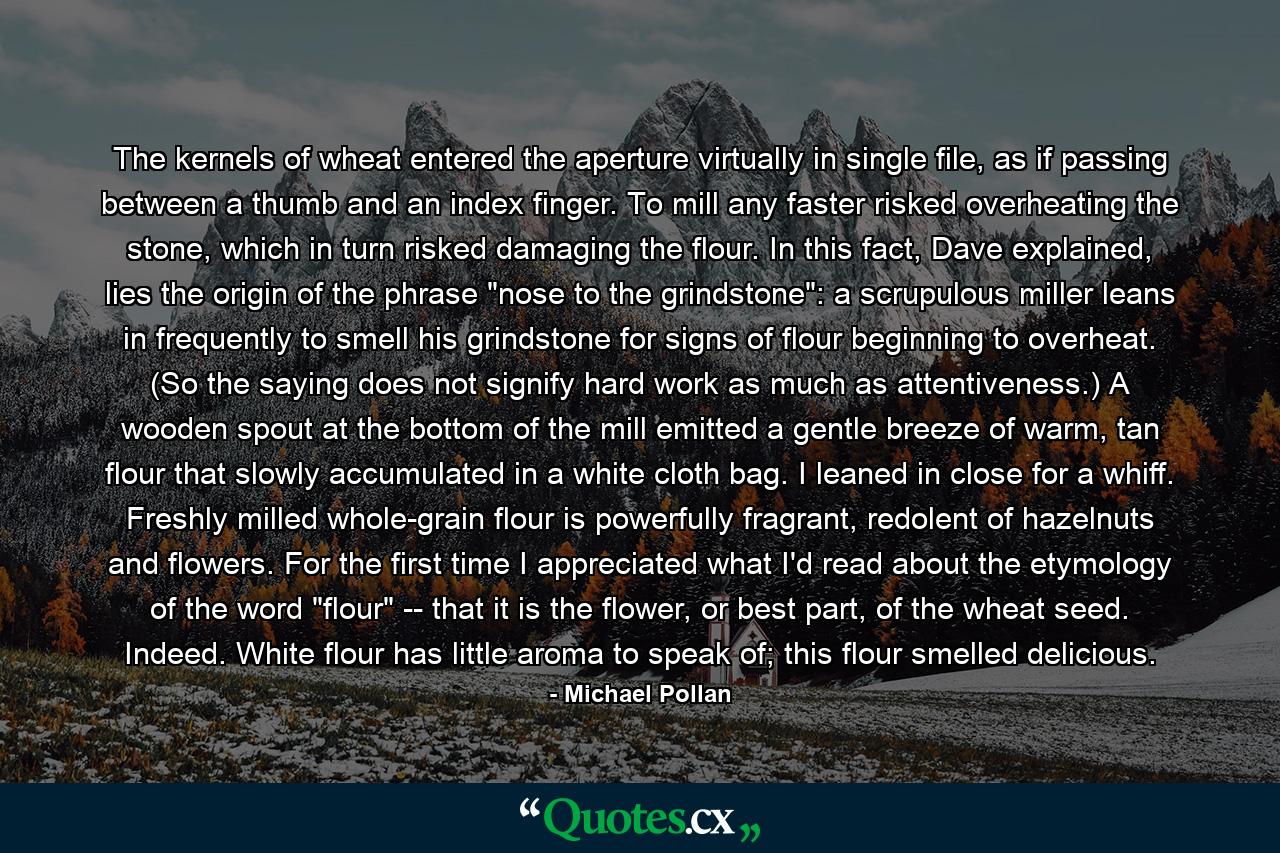The kernels of wheat entered the aperture virtually in single file, as if passing between a thumb and an index finger. To mill any faster risked overheating the stone, which in turn risked damaging the flour. In this fact, Dave explained, lies the origin of the phrase “nose to the grindstone”: a scrupulous miller leans in frequently to smell his grindstone for signs of flour beginning to overheat. (So the saying does not signify hard work as much as attentiveness.) A wooden spout at the bottom of the mill emitted a gentle breeze of warm, tan flour that slowly accumulated in a white cloth bag. I leaned in close for a whiff. Freshly milled whole-grain flour is powerfully fragrant, redolent of hazelnuts and flowers. For the first time I appreciated what I’d read about the etymology of the word “flour” — that it is the flower, or best part, of the wheat seed. Indeed. White flour has little aroma to speak of; this flour smelled delicious.
